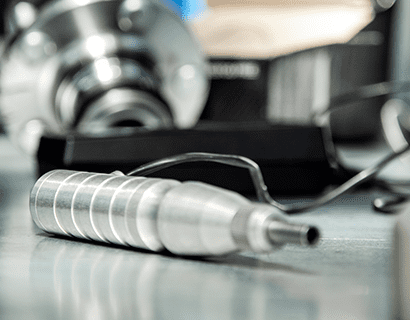Hardness Testing
Ensuring it’s up to the task
#thinkNDTi are the company to trust with your hardness testing, we have a team of qualified and experienced engineers covering the whole of the U.K.
What is hardness testing?
Hardness testing is a non-destructive testing (NDT) method used to determine a material’s resistance to permanent deformation when subjected to an applied force. It provides insights into a material’s mechanical properties, such as its strength, wear resistance, and durability. Hardness is an essential characteristic, as it directly influences the suitability of materials for specific tasks, from engineering and manufacturing to construction and quality control.
Applications across Industries.
Want a chat?
Take me back
The Hardness Testing Procedure
Sample Preparation: A representative sample of the material is prepared by cutting, grinding, or machining. The sample’s surface should be clean and free of contaminants to ensure accurate results.
Test Method Selection: Various hardness testing methods are available, with the most common being the Brinell, Rockwell, Vickers, and Knoop methods. The choice of method depends on the material, its thickness, and the specific requirements of the application.
Indentation: A specialized indenter, which can be a ball, diamond, or pyramid-shaped tip, is pressed into the material’s surface with a known force. The depth or size of the indentation left by the indenter is measured.

Hardness Calculation: The hardness value is calculated based on the indentation size and the applied force. Different methods use varying formulas to determine hardness values.
Evaluation: The hardness value obtained is compared to standards and specifications to assess the material’s suitability for its intended purpose. Any discrepancies or anomalies are noted.
Reporting: Inspection findings, including the hardness value and any relevant details about the material, are documented in a comprehensive report. This report serves as a record for quality control, material certification, and decision-making.

Common Hardness Testing Methods
Brinell Hardness Test: This method uses a spherical indenter to measure hardness based on the diameter of the indentation. It is commonly used for testing metals and materials with coarse grain structures.
Rockwell Hardness Test: The Rockwell method employs different indenters and test loads, allowing for a wide range of hardness measurements. It is widely used in the automotive and aerospace industries.
Vickers Hardness Test: Vickers hardness testing uses a square-based diamond pyramid indenter to measure hardness. It is suitable for a wide range of materials, including ceramics and thin sections.
Knoop Hardness Test: The Knoop method, like the Vickers method, uses a diamond-shaped indenter, making it suitable for small or thin samples. It is often used for brittle materials.

Common Hardness Testing Methods
Hardness Calculation: The hardness value is calculated based on the indentation size and the applied force. Different methods use varying formulas to determine hardness values.
Evaluation: The hardness value obtained is compared to standards and specifications to assess the material’s suitability for its intended purpose. Any discrepancies or anomalies are noted.
Reporting: Inspection findings, including the hardness value and any relevant details about the material, are documented in a comprehensive report. This report serves as a record for quality control, material certification, and decision-making.

